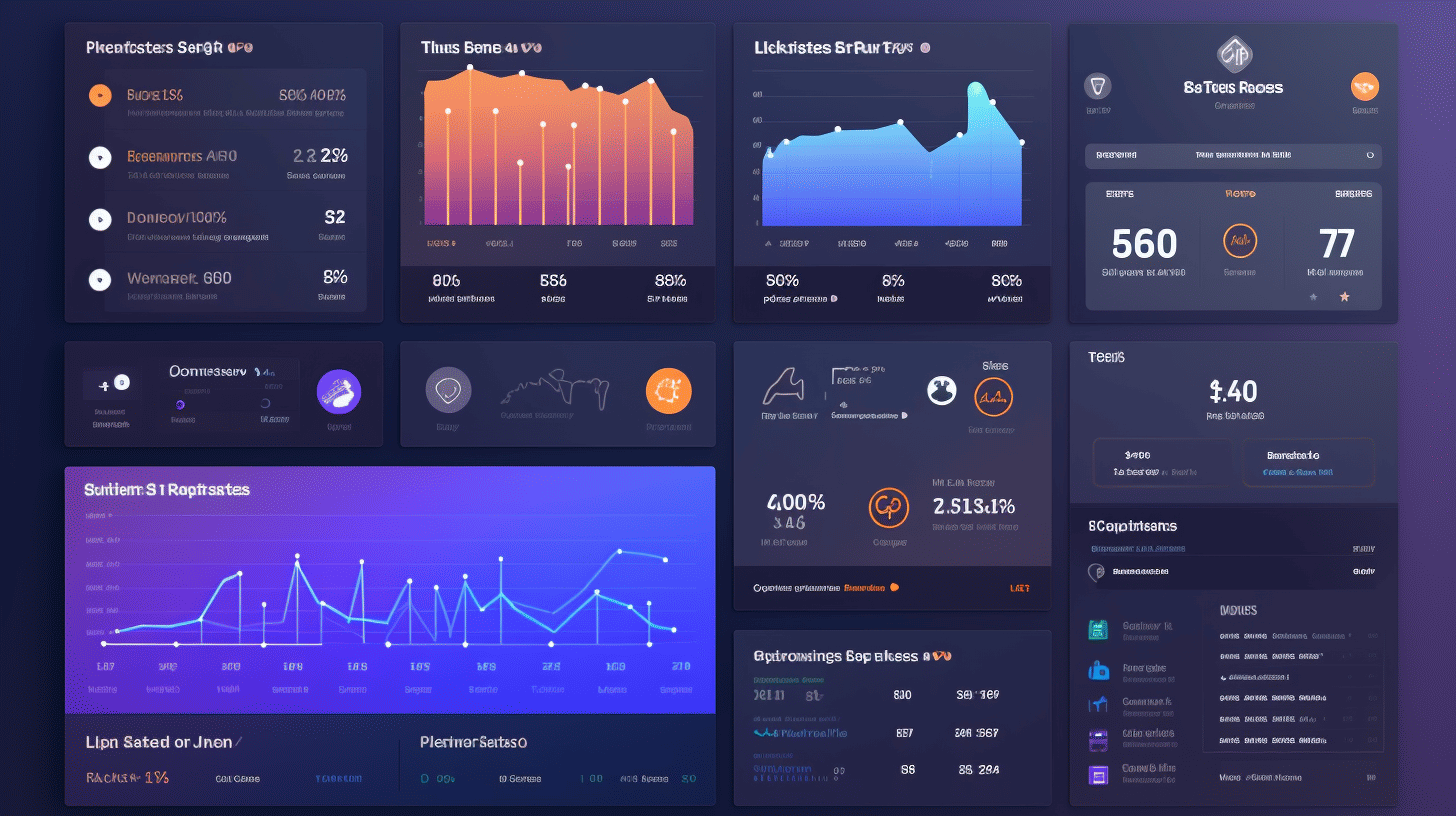在當今快節奏的數位環境中,管理網站可能是一項耗時的任務。從保持內容最新到確保最佳安全性,責任清單似乎永無止境。然而,對於 WordPress 用戶來說有一個好消息——自動化已經成為簡化網站管理並減輕與之相關的一些負擔的強大解決方案。
有了現成的自動化工具,網站所有者現在可以有效地處理各種任務,同時節省寶貴的時間和資源。無論是更新外掛程式和主題、備份資料或優化搜尋引擎內容,自動化都可以提供一系列優勢,從而顯著簡化管理流程。
在本文中,我們將探討 WordPress 中的自動化概念,了解其重要性,並深入探討其對網站管理的影響。我們還將討論一些流行的自動化工具,並提供有關有效實施自動化策略的見解。
因此,如果您準備好了解自動化如何徹底改變您的網站管理體驗,那就讓我們馬上開始吧! 🚀
了解 WordPress 中的自動化
效率是管理網站的關鍵,尤其是涉及可自動化的任務時。這就是 WordPress 自動化發揮作用的地方。在本文中,我們將深入探討自動化的定義、重要性以及它如何提高 WordPress 網站的效率。
定義和重要性
WordPress 中的自動化是指使用工具和外掛程式簡化網站上的重複任務和工作流程的過程。它允許您設定規則和觸發器來自動執行某些操作,從而節省您的時間和精力。
那麼為什麼自動化在 WordPress 中很重要呢?原因如下:
- 節省時間: 透過自動執行任務,您可以騰出時間專注於管理網站的更重要的方面。您無需花費數小時手動執行日常任務,而是可以讓自動化系統為您處理。
- 一致性: 透過自動化,您可以確保任務一致且無錯誤地執行。這降低了人為錯誤的風險並提高了網站的整體品質。
- 提高生產力: 自動化使您可以在更短的時間內完成更多工作。透過自動執行重複任務,您可以提高工作效率並在相同的時間內完成更多工作。
- 增強的使用者體驗: 自動化可以幫助改善您的網站訪客的體驗。例如,您可以設定自動電子郵件回覆以提供即時支援或根據使用者互動發送個人化訊息。
自動化如何提高效率
自動化可以顯著提高您的 WordPress 網站在各個領域的效率。讓我們來看一些例子:
內容發佈
透過自動化,您可以簡化在 WordPress 網站上發佈內容的過程。自動化如何提高內容發佈的效率如下:
- 預計發佈時間: 您可以安排部落格文章、影片或其他類型的內容在特定日期和時間自動發布。這樣就無需手動發布每條內容,從而可以創建一致的發布計劃。
- 內容分發: 自動化工具可以幫助您自動在社群媒體平台上分享已發布的內容,從而節省您向更廣泛的受眾推廣內容的時間和精力。
使用者管理
管理 WordPress 網站上的用戶可能非常耗時,尤其是在您擁有龐大的用戶群的情況下。自動化可以幫助簡化使用者管理流程:
- 用戶註冊: 透過自動化,您可以設定自動用戶註冊和帳戶建立。如果您正在經營線上課程、會員網站或任何其他類型的社群網站,這將特別有用。
- 電子郵件通知: 自動化工具可讓您根據特定觸發器(例如帳戶啟動、密碼重設或訂閱續訂)向使用者發送自動電子郵件。這有助於讓使用者無需人工幹預即可了解情況並參與其中。
網站維護
維護 WordPress 網站涉及定期更新、備份和安全性檢查。自動化可以簡化這些任務:
- 更新: 自動化工具可以處理 WordPress 核心、主題和外掛的更新。這可確保您的網站始終擁有最新的安全性修補程式和功能。
- 備份: 可以安排自動備份定期運行,確保您的網站資料安全備份。這有助於防止資料遺失,並在需要時更輕鬆地恢復您的網站。
- 安全掃描: 自動化工具可以執行定期安全掃描以檢測 WordPress 網站上的任何漏洞或惡意軟體。這可以幫助您主動識別並解決任何潛在的安全問題。
總而言之,WordPress 中的自動化提供了許多好處,從節省時間到提高生產力和使用者體驗。透過利用自動化工具,您可以簡化重複任務、提高效率並專注於擴大您的線上影響力。請繼續關注我們下一節有關 WordPress 最佳自動化工具的內容! 🚀
自動化對網站管理的影響
想像一下,在一個世界裡,您可以讓您的網站更新、內容安排、備份、垃圾郵件管理甚至搜尋引擎優化都處於自動狀態。聽起來像是個夢,不是嗎?那麼,借助自動化的力量,這個夢想就可以變成現實。
在本文中,我們將探討自動化徹底改變網站管理的各種方式。從保持網站更新和安全到確保穩定優質內容的流動,自動化改變了整個遊戲規則。那麼,讓我們深入研究自動化如何改變您管理網站的方式。
管理更新
您知道讓您的網站保持最新的外掛程式、主題和 WordPress 核心版本是多麼重要。但是,手動檢查更新、安裝更新以及測試相容性可能是一項耗時的任務。這時自動化就可以發揮作用了。
透過利用自動化工具,您可以簡化管理更新的流程。這些工具可以幫助您:
- 追蹤外掛程式、主題和 WordPress 核心的可用更新。
- 在您的網站流量較少或活動較少的特定時間安排自動更新。
- 執行相容性檢查以確保更新不會破壞您的網站。
透過自動化,您可以告別手動更新的煩惱,享受始終運行最新、最安全版本的網站。
內容安排
當向受眾傳遞內容時,一致性是關鍵。然而,找到時間定期創建和發佈內容可能很困難。這就是自動化發揮作用的地方。
自動化工具可讓您提前安排貼文和頁面,這樣您就不會錯過內容策略的任何一個節拍。自動化可以這樣改變內容調度:
- 提前規劃好您的內容日曆,確保貼文穩定發布,無需承受最後一刻發布的壓力。
- 即使您不在電腦旁,也可以在特定的時間和日期自動發佈內容。
- 透過安排在策略時間間隔重新發布現有內容來重新利用現有內容,從而吸引新的受眾並最大化其影響力。
透過自動化處理內容安排,您可以專注於創建吸引和取悅觀眾的高品質內容。
自動備份
您的網站資料的安全性絕不會受到損害。定期備份對於防止因事故、駭客攻擊或伺服器故障造成的資料遺失至關重要。然而,手動執行備份可能很繁瑣且容易被遺忘。
透過自動備份解決方案,自動化再次發揮了拯救作用。這些工具可以:
- 自動定期安排備份,確保您的資料安全且最新。
- 將備份儲存在本地端和雲端的安全位置,以增加冗餘。
- 提供緊急情況下一鍵恢復選項,讓您的網站快速啟動並運行。
有了自動備份,您就可以放心,因為您知道您寶貴的網站資料是安全的。
垃圾郵件和安全管理
沒有人喜歡處理垃圾郵件或擔心其網站的安全性。不幸的是,這些都是網站所有者每天都會擔心的問題。幸運的是,自動化可以減輕這些麻煩,並確保您的網站不受垃圾郵件侵擾且安全。
自動垃圾郵件偵測和安全管理工具可以:
- 掃描收到的評論並過濾垃圾郵件,從而節省您的時間和精力。
- 偵測潛在的安全漏洞並自動執行定期安全檢查。
- 阻止惡意 IP 位址和已知威脅,保護您的網站免受攻擊。
透過自動化處理垃圾郵件和安全管理,您可以專注於創造積極的用戶體驗和建立您的線上形象,而不必不斷擔心垃圾郵件或安全漏洞。
搜尋引擎優化
提高您的網站在搜尋引擎上的可見性對於推動自然流量至關重要。然而,實施有效的 SEO 實踐可能很複雜且耗時。自動化可以在這方面提供幫助。
自動化工具可以協助完成以下 SEO 任務:
- 產生 XML 網站地圖並將其提交給搜尋引擎,確保您的網站已正確編入索引。
- 分析您網站的效能,識別 SEO 問題並提出優化建議。
- 自動優化頁面標題、元描述和圖像 alt 標籤以提高搜尋引擎排名。
透過自動化處理 SEO 任務,您可以優化您的網站以適應搜尋引擎並吸引更多的自然流量,而無需成為 SEO 專家。
自動化正在徹底改變網站管理,使其比以往更加簡單、更有效率。從簡化更新和安排內容到增強安全性和優化搜尋引擎,自動化工具正在改變網站所有者的遊戲規則。擁抱自動化並讓它在您的網站管理工作流程中發揮神奇的作用。您的網站和您的內心的平靜將會感謝您!
WordPress 自動化工具可簡化網站管理
在當今快節奏的數位環境中,管理 WordPress 網站可能非常耗時且繁重。從更新插件到安排內容,有許多任務需要持續關注。值得慶幸的是,有強大的自動化工具可以簡化網站管理流程並讓您的生活變得更輕鬆。
自動更新工具💡
為了安全和效能目的,保持 WordPress 網站更新至關重要。手動更新外掛程式和主題可能非常繁瑣且耗時,尤其是在您管理多個網站時。這時自動更新工具就派上用場了。他們會為您處理更新過程,確保您的網站始終運行最新版本的外掛程式、主題和 WordPress 核心。
以下是一些流行的自動更新工具:
- 管理WP: 這個綜合管理平台可讓您從單一儀表板自動更新多個網站。它還提供備份和安全功能以確保您的網站安全。
- 噴射背包: Jetpack 以其功能豐富的插件而聞名,它提供了自動 Jetpack 外掛程式更新功能。該工具不僅可以讓您的 Jetpack 外掛程式保持最新,還可以處理其他 WordPress 核心更新。
專業提示: 使用 ManageWP,您可以自訂自動更新設定以確保相容性並防止可能出現的任何潛在衝突。
調度工具 ⏰
持續發布新內容對於吸引受眾和提高搜尋引擎排名至關重要。然而,找時間來創建和發佈內容可能很困難,特別是在你日程繁忙的情況下。這時調度工具就派上用場了。
這些工具可讓您提前規劃和安排您的內容,從而節省您的時間並確保一致的發佈時間表。以下是一些值得考慮的調度工具:
- 共同日程: CoSchedule 是一款功能強大的編輯日曆工具,還可讓您安排和自動執行內容發佈。它與 WordPress 無縫集成,讓您可以直接從儀表板輕鬆建立和安排貼文。
- Hootsuite: Hootsuite 主要以社群媒體管理工具而聞名,但它也提供安排 WordPress 部落格文章的功能。這使得您可以在一個平台上簡化內容創建和分發過程。
備份管理工具📂
作為網站所有者,擁有可靠的備份系統至關重要。意外隨時可能發生,而最近的備份可確保即使在發生災難性故障時資料仍然安全。備份管理工具簡化了備份 WordPress 網站的過程,確保您擁有網站檔案和資料庫的副本。
以下是一些受歡迎的備份管理工具:
- UpdraftPlus: UpdraftPlus 是一個強大的備份和復原插件,可讓您自動將計劃備份到遠端位置,例如 Dropbox、Google Drive 或 Amazon S3。它還提供緊急情況下的簡單恢復選項。
- VaultPress: VaultPress 由 WordPress 背後的團隊 Automattic 開發,為您的 WordPress 網站提供自動備份和即時安全掃描。由於其設定簡單、介面直觀,您可以放心,因為您的網站已完全備份。
安全工具🔒
確保您的 WordPress 網站的安全至關重要。網路威脅和駭客攻擊不斷增加,採取強有力的安全措施至關重要。幸運的是,有許多自動化工具可以幫助增強您的 WordPress 網站的安全性。
一些流行的安全工具包括:
- Wordfence: Wordfence 是一種廣泛使用的安全性插件,它提供惡意軟體掃描、防火牆保護和暴力攻擊預防等強大功能。它還提供即時流量監控和潛在安全威脅警報。
- 蘇庫裡: Sucuri 以其領先業界的網站安全服務而聞名,它為 WordPress 提供了全面的安全性外掛程式。它包括惡意軟體掃描、DDoS 保護和網站完整性監控等功能。
SEO工具🚀
改善您網站的搜尋引擎優化 (SEO) 對於推動自然流量和提高您的線上知名度至關重要。有一些自動化工具專門用於幫助您優化 WordPress 網站以適應搜尋引擎。
以下是一些值得考慮的 SEO 工具:
- 酵母SEO: Yoast SEO 是 WordPress 最受歡迎的 SEO 外掛之一,它可以幫助您優化內容以獲得更好的搜尋引擎排名。它提供即時分析、XML 網站地圖生成和其他功能來改善您網站的 SEO。
- SEO新聞: SEOPress 是另一個強大的 SEO 插件,提供與 Yoast SEO 類似的功能。它允許您輕鬆管理元標記、監控斷開的連結和生成 XML 網站地圖。
透過利用自動化工具的強大功能,您可以簡化 WordPress 網站管理並專注於真正重要的事情 - 提供有價值的內容並擴大您的線上影響力。使用這些工具,你會發現您的網站管理任務變得更有效率和更有效率!
如何在 WordPress 網站上實現自動化
您是否厭倦了花費無數的時間在 WordPress 網站上執行重複的任務?答案就是自動化!透過實施自動化策略,您可以簡化網站管理、節省時間並提高效率。在本文中,我們將逐步探討如何在 WordPress 網站上實現自動化。
了解您的網站需求
在深入自動化之前,至關重要的是要清楚了解您網站的特定需求。花一些時間評估您目前的工作流程並找出耗費您大部分時間的任務。您是否不斷更新外掛程式、發布部落格文章或管理用戶註冊?透過找出這些痛點,您可以確定自動化可以在哪些方面產生最顯著的影響。
一旦確定了自動化的關鍵領域,您就可以開始選擇最適合您需求的工具。
選擇正確的工具
由於可用的自動化工具種類繁多,為您的 WordPress 網站找到合適的工具可能會很困難。但是,透過考慮您網站的特定要求,您可以縮小選擇範圍。以下是 WordPress 網站所有者使用的某些流行的自動化工具:
- 噴射背包:這個綜合外掛提供了一系列自動化功能,例如自動社交分享、備份、安全掃描和垃圾郵件防護。
- 吧:如果您在 WordPress 網站上經營線上商店,WooCommerce 提供各種自動化選項,包括庫存管理、訂單處理和電子郵件通知。
- 札皮爾:Zapier 是一個強大的整合平台,它允許您連接不同的應用程式並在它們之間自動執行操作。它透過流行的 WordPress 外掛(例如 Mailchimp 和 Gravity Forms)提供了廣泛的自動化可能性。
請記住,在安裝任何新工具之前,請務必檢查評論、評級和與 WordPress 版本的兼容性,以確保順利整合。
正確的工具設定
一旦為您的網站選擇了正確的自動化工具,就該正確設定它們了。請遵循以下步驟確保無縫實施:
- 透過您的 WordPress 儀表板安裝所選的外掛程式或整合工具。
- 根據您的要求配置設置,密切注意任何可用的自訂選項。
- 設定觸發器和操作來自動執行特定任務。例如,您可以設定一個觸發器,在社群媒體平台上自動分享新的部落格文章,或在使用者註冊時向使用者發送電子郵件通知。
確保在設定後徹底測試每個自動化流程,以確保其正常運作。
監控和調整您的自動化策略
與 WordPress 網站的任何方面一樣,自動化策略需要監控和調整以確保最佳效能。密切注意自動化任務,以確保它們按預期執行。此外,收集用戶的回饋並分析數據以確定需要改進的領域。
定期檢查並調整您的自動化工作流程,以適應網站需求的任何變化或您選擇的工具提供的新功能。
透過不斷監控和調整您的自動化策略,您可以確保 WordPress 網站管理的效率和有效性。
🌟 在您的 WordPress 網站上實現自動化可以節省您的時間、減少重複任務並提高整體生產力。透過了解您的網站需求、選擇正確的工具、正確設定它們並監控它們的效能,您將順利獲得完全自動化的網站管理體驗。準備好釋放自動化的力量並享受更簡化的 WordPress 之旅! 🚀
結論
總之,WordPress 中的自動化功能徹底改變了網站管理。透過利用自動化的力量,網站所有者可以簡化其操作、提高效率並增強整體效能。從管理更新和安排內容到確保備份和處理安全,自動化簡化了通常耗時且複雜的任務。
透過正確的自動化工具(例如 Managed-WP™ 提供的工具),網站擁有者可以體驗簡化和優化的 WordPress 網站帶來的好處。 Managed-WP™ 提供優質託管 WordPress 雲端託管平台,負責技術方面的問題,讓使用者專注於他們的數位體驗。透過專家的全天候問題解決支持,Managed-WP™ 可確保您安心並獲得順暢的網站管理體驗。
透過 Managed-WP™ 實現自動化並充分發揮 WordPress 網站的潛力。提升您的網站管理水平,享受自由,專注於最重要的事情—創造卓越的線上體驗。立即探索自動化的力量 管理-wp.com.
常見問題解答
- 自動化如何幫助簡化 WordPress 上的網站管理?
WordPress 上的自動化功能可以透過自動執行重複性任務(例如內容發佈、社群媒體分享、備份、更新和安全掃描)來幫助簡化網站管理。它節省時間和精力,提高效率,並減少錯誤或疏忽的機會。
- WordPress 有哪些流行的自動化外掛?
一些受歡迎的 WordPress 自動化外掛是:1. Jetpack、2. UpdraftPlus、3. WP Scheduled Posts、4. Social Warfare 和 5. iThemes Security。這些插件提供各種自動化功能以簡化網站管理。
- 在 WordPress 上使用自動化是否有任何風險或缺點?
雖然自動化可以大大有利於網站管理,但謹慎行事很重要。過度自動化可能會導致人性化的喪失、減少客製化選項並增加技術問題的可能性。仔細評估您需要的自動化功能並明智地使用它們。
- 自動化插件可以完全取代手動網站管理任務嗎?
雖然自動化插件可以處理許多日常任務,但它們不能完全取代手動網站管理。永遠需要人類的監督和乾預,特別是在內容創作、策略決策和個人化使用者體驗方面。
- 如何為我的 WordPress 網站選擇正確的自動化外掛?
考慮您的具體網站管理需求和目標。尋找提供您所需功能、具有積極的用戶評價、定期更新、良好支援以及與您使用的其他工具整合的自動化插件。測試和評估插件以確保它們增強而不是阻礙您的網站管理流程。



















